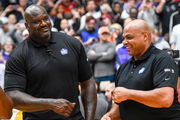

Equine life is on the radar of an arboviral disease that has returned after a year since the last outbreak. The data show that the West Nile virus first appeared in New York in 1999. Since then, it has affected many bird species, animals, and even people through mosquitoes. According to NJAES, from the late 1990s to 2017, there were 27,600 cases of American horses tested positive. Almost no traces or very few cases emerged in the last few years that gave a false impression of a decrease. However, the virus returned stronger last year.
Watch What’s Trending Now!
The sickness that has been around since its inception has impacted 47 states. Similar to what happened the previous year, a healthy horse was affected by the virus recently.
ADVERTISEMENT
Equestrian hero shows signs of deadly viruses return
On July 10, the stubborn West Nile virus (WNV) was discovered in a 6-year-old horse in Kern County, California. The Warlander mare started to exhibit clinical signs with a 104-degree temperature. On June 30, all of the symptoms—including ataxia in all limbs, facial fasciculations, and agitation—indicated that the horse was ill. It was confirmed in a report by theHorse that the mare was immunized and is still alive.
This is the first case that the Equine Disease Communication Centre (EDCC) recorded this year. Based on studies, early spring seems to have fewer cases than the latter. As summer advances, symptoms increase and worsen as mosquitoes breed. Although infected mosquitoes are not frequently seen in large numbers throughout the seasons until August. Sadly, 96.9% of all known WNV cases in non-human mammals have been found in horses.
Top Stories
NFL Announces Punishment for Shedeur Sanders Incident

Ex-NFL GM Tore Up Antonio Brown’s Contract & Nullified Guarantees After Wild Helicopter Incident

NFL Announces Final Punishment Decision for Patrick Mahomes Incident Against Texans

Pro Suffers Disqualification at PGA Tour Q-School After Several Players Withdrew Abruptly

NFL Announces Punishment For Jared Goff Incident After Verdict on Cowboys Star

Respect Pours In for Shaquille O’Neal, Charles Barkley After $200,000 Announcement

ADVERTISEMENT

ADVERTISEMENT
In California alone, nearly 16 horses tested positive with WNV last year. The first case was confirmed in the second week of July. From less than a year old to more than 15 years old, it plagued many young horses. With symptoms affecting 10 men and 6 females across various breeds. Over 11 horses recovered, four underwent euthanasia, and one passed away in the final week of October, which verified the last case.
Symptoms and vaccination to save equine lives
Six months after diagnosis, data have shown that 40% of horses that recover from the acute sickness brought on by WNV still have lingering symptoms, such as gaits and unusual behavior. Consequently, vaccinations against the WNV are advised as a primary solution. According to CDFA, a veterinarian should evaluate any horse exhibiting neurological symptoms to rule out symptoms such as WNV, Equine Herpes Virus-1, Equine Protozoal Myeloencephalopathy, Eastern/Western Encephalomyelitis, and Rabies.
ADVERTISEMENT
READ MORE “We Were All Devastated”: Equestrian Death After Fatal Fall Leaves Sports World Shocked
It is also advised to check for any stagnant water source if so practice dumping, cleaning, and refilling. The equestrians are expected to safeguard their rides by keeping them indoors during the fall season. It is also mentioned to apply mosquito repellent approved for equine use. Further, the American Association of Horse Practitioners (AAEP) advises to get the yearly core vaccine for WNV. In places with extended mosquito seasons, it is also advised to get two booster shots each year—one in the spring and one in the fall—for horses who previously had vaccinations.
Watch this story Heartbroken After 4-Year-Old’s Fatal Horse Accident, Equestrian Community Lends Helping Hand
ADVERTISEMENT
ADVERTISEMENT
ADVERTISEMENT
ADVERTISEMENT

